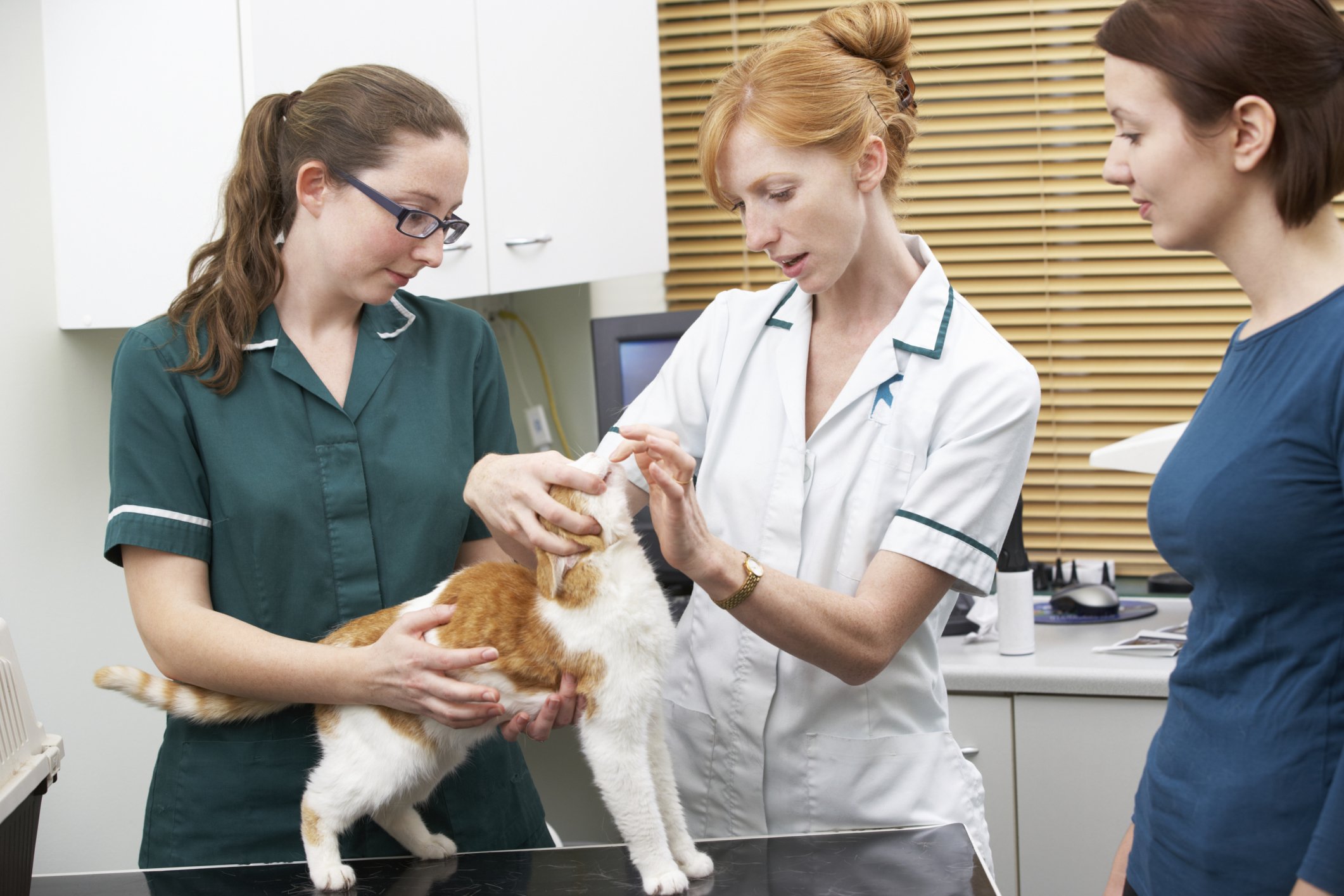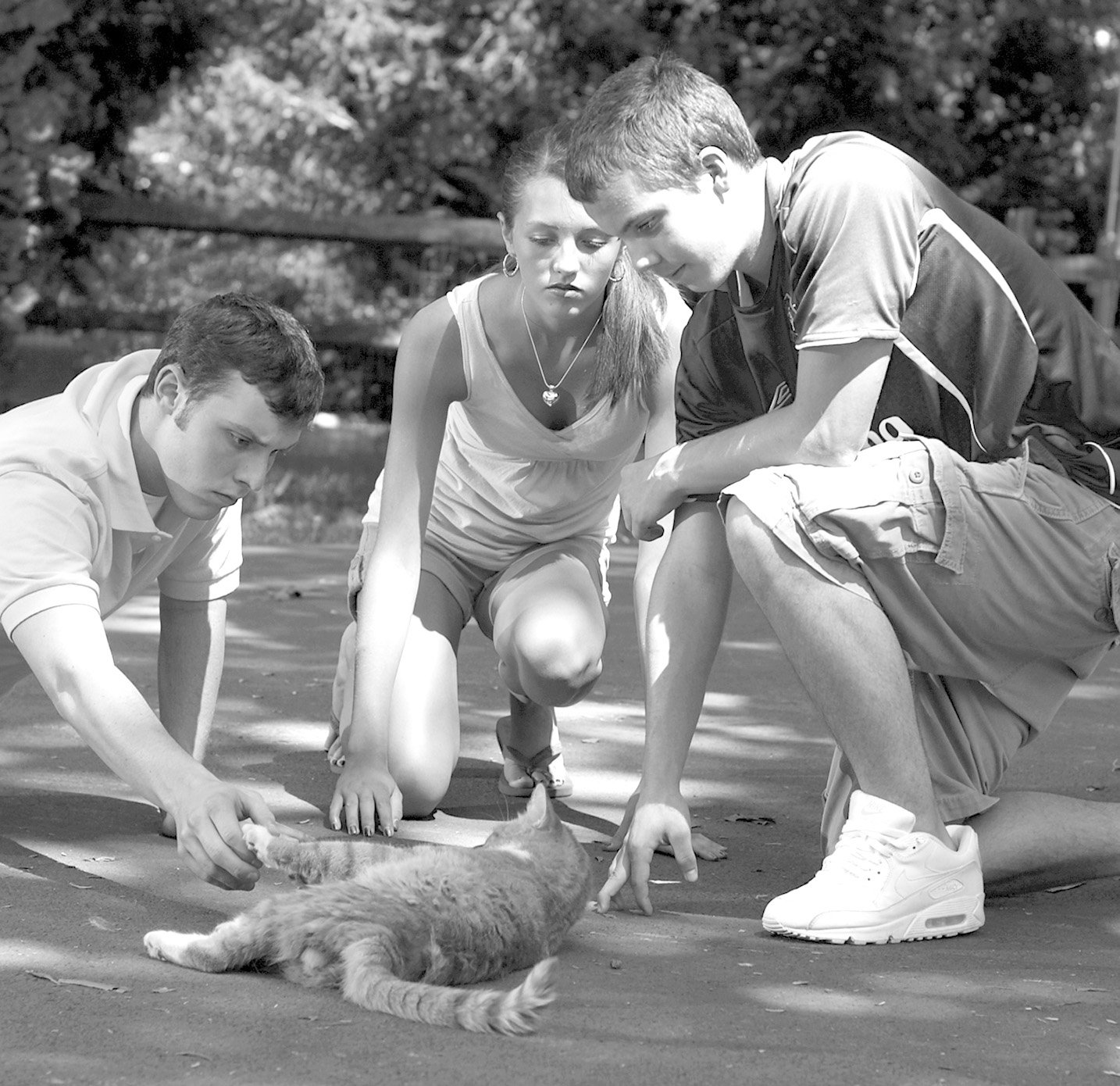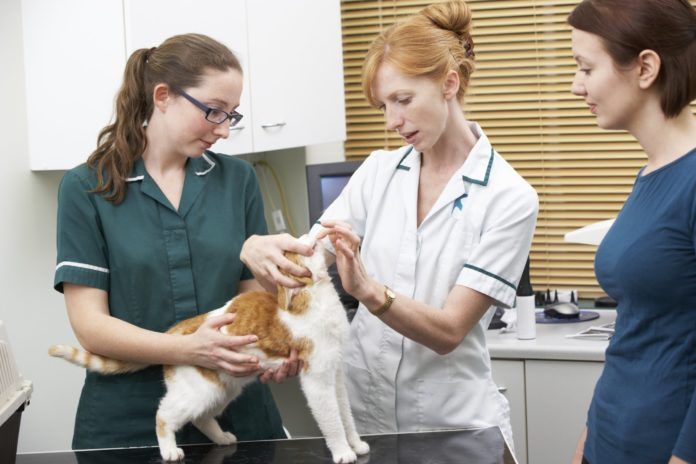Unfortunately, it’s simply impossible to predict when accidents will occur. But luckily, we can take steps to prevent them — or at least minimize their effects — when bad things happen to your cats.
Take the case of Susan Westerson, of Rochester, New York, who lives with her now four-year-old Siamese cat, Darien. If it weren’t for fast action on Westerson’s part, Darien may never have reached his first birthday. “Darien was gobbling down his food like there was no tomorrow,” recalls Westerson. “Then, all of a sudden, he started gagging and heaving, but nothing was coming out. At first, I thought it might be a hairball, but then he collapsed.”
Westerson quickly rushed over to Darien. Relying on her medical training as a former hospital surgical technician, she carefully opened Darien’s mouth, and did a finger swipe. Her index finger detected the problem: a large piece of kibble lodged deep inside Darien’s mouth, blocking his ability to breathe. She was able to pluck out the kibble and Darien began to breathe again —albeit very labored.
Importance of quick action
She called her veterinarian, who instructed her on how to monitor Darien. Within 30 minutes, he was back to being a spunky kitten again, and Westerson could finally sigh with relief. As a precaution, the veterinarian advised Westerson to switch to another quality brand of kitten chow that featured smaller kibble pieces to prevent a future choking incident.
Thinkstock

Unfortunately, far too many caring pet owners shower their pets with love, attention and treats, but far too few know how to provide first aid or give CPR (cardiopulmonary resuscitation) should an emergency arise when even seconds count in saving the life of a pet.
“Being prepared is important,” stresses Elizabeth Rozanski, DVM, a veterinarian and Associate Professor at Cummings School of Veterinary Medicine at Tufts University who specializes in emergency medicine. Equally important is recognizing what’s normal for your cat — how she usually walks, sleeps, eats, urinates and defecates. Simple procedures like checking the color of her gums, taking her pulse and knowing her normal heart rate can provide valuable information to a veterinarian in an emergency.
“And be sure to keep the contact information of your veterinary clinic and emergency veterinary clinic handy,” says Dr. Rozanski.
Veterinary care is essential
While first aid is important, it’s not a substitute for regular veterinary care, says Deborah Mandell, VMD, staff veterinarian and adjunct assistant professor in emergency services at the University of Pennsylvania’s School of Veterinary Medicine in Philadelphia.
Dr. Mandell also serves as pet medical advisor for the American Red Cross and authored the revised Cat First Aid and Dog First Aid training booklets (and DVDs). Each booklet provides step-by-step instructions and helpful photographs on how to give your pet medications, compile a pet first-aid kit, and be prepared for a natural disaster — as well as how to stabilize a pet suffering from everything from puncture wounds to frostbite until veterinary care can be given.
Cats can be more challenging than dogs when it comes to detecting health problems or injuries because they tend to mask their pain masterfully. Take a few minutes each day to pet your cat from head to tail and be on the lookout for any bumps, lumps or areas of sensitivity, suggests Dr. Mandell.
A healthy cat has gums that are pink and moist. Gums pale, white or blue in color can signal a problem. “The best way to check the gums is a couple millimeters above the canine tooth,” says Dr. Mandell. “Lift up your cat’s muzzle and press lightly with your finger on the gum area above the tooth. It should return to a pink color within a couple seconds of you pressing against it.”
Learn the ABCs of CPR
To check if your unconscious cat is breathing, hold a cotton ball or tissue just in front of her nostrils and see if it moves. You can also use a mirror near the cat’s mouth. If it fogs up, that is a sign the cat is breathing, says Dr. Rozanski. You can also look for a rise and fall of the chest.
Thinkstock

If your cat is not breathing, you may need to perform CPR in this A-B-C order of priorities:
Airway: Place the cat on her side and gently tilt the head slightly back. Check the throat and mouth for any foreign objects that may have caused your cat to collapse and become unconscious. These situations are rare, but prompt action could save your cat’s life.
Breathing : If your cat is not breathing, seal your cat’s entire snout with your mouth and gently exhale until you see the chest rise. Give four or five breaths rapidly and then check to see if your cat is breathing without assistance.
Circulation: If you cannot detect a heartbeat or pulse, perform chest compressions. With your cat lying on her right side, kneel with her chest facing you and place the palm of your hand over her ribs, just behind the front legs. Place your other hand underneath her right side and compress the chest with both hands between one-half to one inch.
Because home CPR does not always ensure a good outcome, Dr. Rozanski urges pet owners to seek veterinary help immediately.
Wound care
If your cat’s leg is bleeding due to a cut or a bite, Dr. Rozanski urges you not to panic. “Cats have more blood than you think,” she says. “Put pressure on the wound, but do not take it off to see if the bleeding has stopped. If you don’t have a first-aid kit handy, a towel and duct tape works well. Always keep towels in your car.” And don’t use peroxide to clean a wound on your cat. “Peroxide is bad for wounds,” according to Dr. Rozanski. “A safer alternative would be to use sterile saline solution.”
Use caution
To avoid being bitten when treating an injured, conscious cat, approach slowly and speak in a calm voice. For testy or fearful cats, try dropping a towel or blanket on the cat from above and behind. Then grasp the scruff of her neck so she cannot turn around and attempt to bite your hand. A second option: remove the top half of a plastic pet carrier and guide the cat into the bottom half. Drop a towel over the cat and then replace the top lid.
If your cat is choking on food or a toy and is conscious, approach cautiously. Then open your cat’s mouth and carefully sweep the inside with your finger to try to feel and dislodge the object. Pull the tongue forward. If you can’t dislodge it, you will need to perform abdominal thrusts by following these guidelines:
Lift up your cat, positioning her spine against your chest. Place your hands around her waist.
Close your hands together to form a fist and place the fist just behind the cat’s last rib.
Compress the cat’s abdomen by pushing up with your fist five times quickly and rapidly.
Then check your cat’s mouth to see if the object has been dislodged.
Parting advice: If you’re ever unsure if your cat has a pressing medical problem, don’t hesitate to take her to the clinic.
Says Dr. Mandell, “I much prefer having someone bring in their pet and then tell the owner, ‘Everything is OK. You can go back home.’ Don’t wait until the problem intensifies.” — Catnip staff




